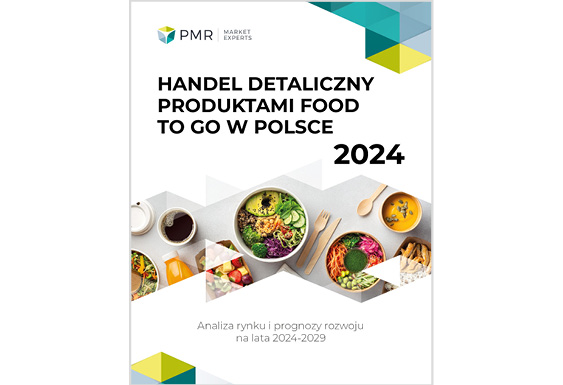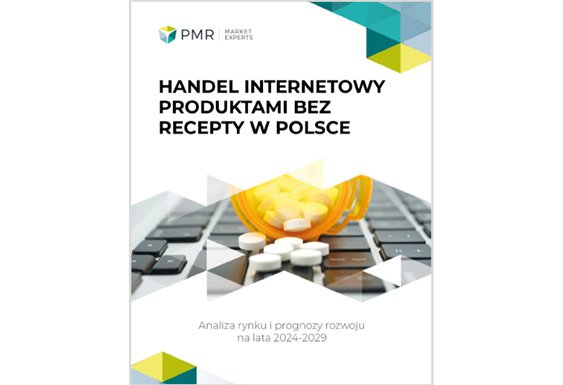
WIADOMOŚCI
17/04/2024
Wzrasta popyt na używany sprzęt IT i używaną elektronikę użytkową
Najnowsze dane PMR wskazują, że wartość rynku używanego sprzętu IT i elektroniki użytkowej w 2023 r. zbliżyła się do poziomu 6,5 mld zł, notując 13% wzrost rok do roku. Popyt na używane produkty kształtują przede wszystkim cykliczna wymiana urządzeń elektronicznych, popularność wiodących platform ogłoszeniowych, a także obserwowany wzrost cen nowych produktów, który motywuje konsumentów do […]

CASE STUDY
25/03/2024
Analiza rynku wdrożeń systemów ERP w Polsce
Dla jednej z firm działających na polskim rynku wdrożeń systemów ERP przeprowadzono analizę rynku ERP. W ramach projektu przeprowadzono dedykowane badanie ilościowe B2B strony popytowej, analizę otoczenia konkurenyjnego, mapowanie integratorów i firm wdrożeniowych oraz opracowano prognozy rozwoju rynku. Cele projektu Klient jest jednym z kluczowych partnerów wdrożeniowych jednego z największych producentów oprogramowania ERP. Celem klienta […]
Naszą misją jest dostarczanie rekomendacji i wiarygodnych informacji potrzebnych do podejmowania kluczowych decyzji. Oferujemy dostęp do najnowszych raportów, badań i analiz branżowych, m.in. poprzez platformę Market Intelligence.
Branże, w których się specjalizujemy:

WIADOMOŚCI
21/03/2024
Rynek usług stomatologicznych w Polsce stale rośnie
Wyniki najnowszego badania PMR wykazały, że w 2023 r. z usług stomatologicznych skorzystało 56% Polaków. W kolejnych latach zachowania konsumenckie będą pozytywnie wpływać na ten rynek, zwłaszcza w obszarze ortodoncji. Blisko co piąty pacjent chciałby założyć aparat ortodontyczny by poprawić wygląd swojego uzębienia. W latach 2020-2023 rynek usług ortodontycznych odpowiadał za około 12% rynku […]

WIADOMOŚCI
21/03/2024
Sytuacja na rynku usług stomatologicznych
Wywiad z Wiolettą Januszczyk, Dyrektor Zarządzającą Pionem Usług Konsumenckich w Medicover

WIADOMOŚCI
18/03/2024
Kosmetyki do pielęgnacji ciała największą kategorią kosmetyczną w rynku
W latach 2024-2029 rynek artykułów kosmetycznych w Polsce rozwijał się będzie w średniorocznym tempie wzrostu (CAGR) na poziomie 5%, wynika z prognoz zawartych w najnowszym raporcie PMR pt. „Handel detaliczny artykułami kosmetycznymi w Polsce 2024”. Chociaż dynamika rynku będzie niższa niż w latach 2020-2023, na co wpływ będzie miało m.in. wyhamowanie tempa wzrostu cen, popyt […]

CASE STUDY
14/03/2024
Mapa branży gamedev dla krajów Europy: Polska, Czechy, Węgry, Cypr oraz Malta
Dla jednego z 3 największych na świecie dostawców chmury obliczeniowej (usługi IaaS/PaaS), zespół PMR stworzył mapę branży gamedev. Dogłębna analiza konkurencji i firm działających na rynku gamingowym dotyczyła wybranych przez klienta krajów – Cypru, Czech, Malty, Polski oraz Węgier. Cele projektu W ramach poszukiwania potencjalnych klientów usług AWS, PMR stworzył kompleksową bazę firm z branży […]
Wspieramy firmy w wyborze i wdrażaniu optymalnych strategii rozwoju. Pomagamy w budowie i efektywnym wdrażaniu strategii biznesowych, fuzjach i przejęciach oraz transformacjach cyfrowych. Podnosimy efektywność marketingu, sprzedaży i poprawiamy rentowność dzięki optymalizacjom w zarządzaniu cenami.
250+
projektów badawczych i consultingowych rocznie
500+
klientów globalnych
5 000+
przebadanych marek
50+
analizowanych krajów

WIADOMOŚCI
08/03/2024
Wartość polskiego rynku chmury obliczeniowej w 2023 r. wzrosła o 1 mld zł
Wbrew początkowym obawom związanym ze spowolnieniem gospodarczym, na skutek wysokiej inflacji i wzrostem stóp procentowych, rynek chmury obliczeniowej nie wykazuje oznak spowolnienia. Wręcz przeciwnie, według najnowszych analiz PMR, wydatki na chmurę w 2023 r. ponownie osiągnęły rekordowy poziom, rosnąc rok do roku nominalnie o 1 mld zł. Tempo wdrażania chmury nie osłabło Według najnowszego raportu […]

CASE STUDY
05/03/2024
Analiza rynku chmury obliczeniowej oraz data center w pięciu krajach
Dla jednego z wiodących operatorów telekomunikacyjnych w Europie przeprowadziliśmy kompleksową analizę rynku chmury obliczeniowej i data center w krajach CEE/SEE (Chorwacja, Czechy, Grecja, Słowacja, Węgry). Analizę i prognozy rynku wsparły kompleksowe badania ilościowe i jakościowe w poszczególnych krajach. Cele projektu Potrzebą klienta jako aktywnego gracza na rynku data center było uzyskanie wyczerpujących informacji o rynkach […]
Każdego roku przeprowadzamy setki badań, dzięki którym nasi klienci mogą lepiej rozumieć interesujące ich rynki. Badamy klientów biznesowych i konsumentów, konkurentów i dostawców, produkty i usługi, marki i ceny. Na podstawie wyników tych badań nasi eksperci i doradcy budują rekomendacje pozwalające naszym klientom na rozwój. Realizujemy specjalistyczne badania wybranych rynków i segmentów oraz przekrojowe badania w wielu krajach równocześnie. Publikujemy kilkadziesiąt stałych raportów branżowych rocznie.

WIADOMOŚCI
14/02/2024
Wartość rynku telekomunikacyjnego w Polsce stale rośnie – rekordowy wynik w 2023 roku
Według najnowszego raportu PMR, polski rynek telekomunikacyjny w 2022 i 2023 r. zanotował rekordowy wzrost wartości: w 2022 r. rynek urósł o 5%, a estymacje PMR na 2023 r. wskazują na dynamikę na poziomie blisko 7%. Wartość rynku telekomunikacyjnego rośnie, napędzana głównie przez dwa kluczowe segmenty – telefonię komórkową i usługi dostępu do internetu. […]

WIADOMOŚCI
06/02/2024
Polacy coraz częściej kupują produkty bez recepty w internecie
Apteki stacjonarne pozostają najważniejszym miejscem sprzedaży leków OTC, suplementów diety i dermokosmetyków w Polsce. Jak jednak wynika z najnowszego raportu PMR ,,Handel internetowy produktami bez recepty w Polsce 2024. Analiza rynku i prognozy rozwoju na lata 2024-2029”, popularność aptek i sklepów internetowych wśród kupujących nie przestaje rosnąć, a wartość internetowej sprzedaży produktów bez recepty w […]

WIADOMOŚCI
23/01/2024
Wstrzymanie nowych inwestycji mieszkaniowych przełożyło się na głęboki spadek rynku prefabrykacji betonowej
Wojna w Ukrainie w połączeniu z bardzo wysoką inflacją sprawiły, że gwałtownie wyhamował popyt na mieszkania. Po kilkuletnim okresie wzrostów aktywności i wartości realizowanych robót, w II poł. 2022 r. rozpoczęła się wyraźna korekta w obszarze budownictwa kubaturowego. Deweloperzy ograniczyli rozpoczynanie nowych projektów inwestycyjnych. Dla rynku prefabrykacji betonowej przełożyło się to na silne załamanie popytu […]

REFERENCJE
17/01/2024
Doceniamy słowa uznania od naszych klientów
i jesteśmy dumni, że możemy mieć wpływ na ich sukcesy.

CASE STUDY
08/01/2024
Analiza internetowego rynku produktów używanych w Polsce
Dla największej polskiej platformy e-handlu PMR przeprowadził badanie rynku online resale. Cele projektu W celu przekazania naszemu klientowi kompletnych danych o sytuacji rynku online resale w Polsce zespół PMR zaplanował: analizy rozmiaru oraz struktury rynku odsprzedaży internetowej, analizy motywacji i barier towarzyszących zakupom i sprzedaży na rynku wtórnym, analizy kontekstu ekonomicznego na rynku resale. […]
Szukasz najlepszego rozwiązania dla dalszego rozwoju swojej firmy?
Porozmawiaj z nami już dzisiaj!

Justyna Wasa
Sales & Business Development Director












